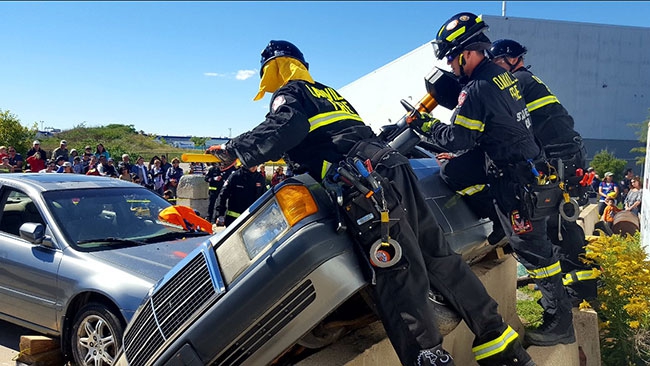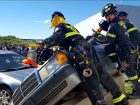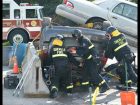
Extrication tips: January 2017
Chad Roberts
Features Extrication TrainingLet’s start from the beginning.
 Extrication is one of the broadest and constantly changing calls firefighters face – starting from the beginning needs to be stressed in order to properly address a the necessary skills. When it comes to extrication techniques
Extrication is one of the broadest and constantly changing calls firefighters face – starting from the beginning needs to be stressed in order to properly address a the necessary skills. When it comes to extrication techniquesI can hear the sighs. But from my roughly 10 years in the fire service, this is a phrase I know we’ve all heard a lot, and sometimes, although it seems mundane for seasoned and well-trained firefighters to start at the beginning, I think doing so can be extremely beneficial regardless of skill level or years of service.
Whether it’s fire attack, medical, hazmat, tech rescue or even auto extrication, starting from the beginning shouldn’t be looked at as a challenge to the knowledge and expertise of first responders: it should be considered a building block for success and understanding. With respect to auto extrication – one of the broadest and constantly changing calls we face as responders – starting from the beginning needs to be stressed in order to properly address a sometimes overlooked skill we are expected to provide.
So, let’s start from the beginning. I am a member of the Oakville Fire Department in southwestern Ontario. I have been on the job full time for a little over eight years; prior to that I was a volunteer in Essa Township for about two years. Oakville is a department made up of more than 200 full time firefighters that services a community west of Toronto, with a population nearing 180,000. From an extrication perspective, the OFD responds with two heavy rescues to three major highways. I’ve been working on a heavy rescue for almost five years, in addition to being a member of Oakville’s extrication team for five seasons. When I joined the extrication team I was looking for more experience and knowledge related to auto extrication, but what I got out of it was far more in depth – an introduction to a world of shared information about a discipline that is changing every day.
What makes auto extrication such a fascination? For me it’s the change in the way things are done. From the time I’ve been a member of the fire service, every facet of auto ex has and continues to change. Similar to the way houses are constructed today affects the way we operate at structure fires, the structure of vehicles impacts our approach and our response. The tools we use are constantly changing to try to keep up with the vehicle advances. Most importantly, the way we size-up and attack each individual wreck is evolving, ensuring that we have better and more efficient options for accessing and treating patients.
Through this column, I will share experience, knowledge and expertise. My knowledge has come from many places over the years – from courses, co-workers, and auto-ex competitions; the resources have been endless and continue to grow through various new platforms. I will pick out some of the newer issues in the auto-ex world to write about, but I’ll also stress the importance of simple things such as size-up and how it creates a platform for success at every scene.
The next column, in April, will focus on scene size-up and touch on some of the obvious points, but I’ll also be explore some more intricate ideas that can save time and help shape how the extrication scene will play out. Being in a command position on the extrication team, as well as a firefighter /driver of a heavy rescue, I have found that on-scene size up has always been a critical aspect of the response. The size-up helps us formulate a plan to efficiently and effectively use our available resources, determine how to allot manpower, and choose the course of action that will best serve our patients. From there, we will move on to primary stabilization and the best way to access patients, making sure it’s safe for them and the rescuers on scene. Next we’ll look at secondary stabilization and prepping the vehicle for extrication, from the inside and out (this is an area that I find is easily forgotten but can shave lots of time from extrication and possibly change our action plan). After all that, we can begin to talk about making plans for the extrication and how to attack each scenario, keeping in mind things like a backup plan for patient status changes.
Later, I will branch into ideas and issues such as new-vehicle technology, safety features and alternate fuels, along with new and old tool ideas (battery, gas powered and hand tools) that I hope will help change the way you can approach accident scenes. We’ll look at simple stabilization and more complex scenarios, glass management issues, and even different tool techniques and positioning.
Be smart, and never stop watching, reading and listening.
Chad Roberts is a firefighter in Oakville, Ont., and works on a heavy rescue. He is a member of the Oakville’s extrication team and competes and trains across North America. chadroberts12@gmail.com
Print this page



